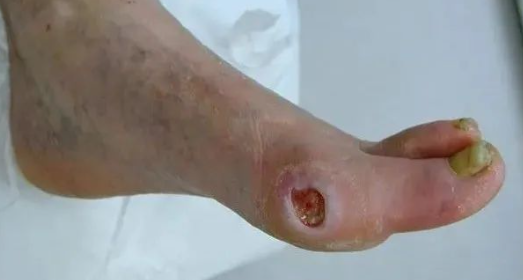A skin ulcer is an open, pit-like wound on the skin. It refers to the local necrosis, ulceration, and ulceration of skin or mucous membrane tissue due to various reasons. If left untreated, it can develop into more serious problems. Today let's learn everything about skin ulcers and how to prevent and treat these problems, shall we?
What are skin ulcers?
Skin ulcers refer to local necrosis, ulceration, and ulceration of skin or mucous membrane tissue due to various reasons. Skin ulcers are usually caused by long-term pressure, friction, trauma, poor blood circulation, infection, chronic diseases, and other factors. Common types of skin ulcers include pressure ulcers, venous ulcers, arterial ulcers, diabetic foot ulcers, and traumatic ulcers.
What are the symptoms of skin ulcers?
Localized pain: Skin ulcers often cause localized pain or discomfort.
Redness and Swelling: The skin around the ulcer may become red, swollen, and warm.
Drainage: Ulcers may ooze secretions such as pus, blood, or lymph.
Necrosis and ulceration: Ulcers usually cause localized necrosis and ulceration of skin and tissue, forming an ulcerated surface.
Infection: Because the skin and tissue on the ulcer surface have been damaged, they are susceptible to infection with bacteria and other pathogens, leading to symptoms of infection, such as fever, local redness, pain, etc.
Chronic ulcers: Certain types of skin ulcers, such as venous ulcers and diabetic foot ulcers, may become chronic and difficult to heal.
Common types of skin ulcers include the following:
Pressure ulcers: Mainly occur in patients who are bedridden, sitting, or have difficulty moving for a long time. They are characterized by necrosis and ulceration caused by long-term pressure on the skin. They are common in the buttocks, spine, shoulder blades, ankles, and other parts of the body.
Venous ulcers: Mainly occur in the lower limbs. They are characterized by varicose veins. Due to poor blood circulation, skin and tissue are deprived of oxygen, necrosis, and ulceration.
Arterial ulcers: Mainly occur in the lower limbs and are characterized by insufficient arterial blood supply, resulting in ischemia, necrosis, and ulceration of the skin and tissue.
Diabetic foot ulcer: Mainly occurs in the feet of diabetic patients. It is characterized by neuropathy and vascular disease caused by diabetes, leading to ischemia, necrosis, and ulceration of the skin and tissue of the foot.
Traumatic ulcers: Mainly caused by trauma, burns, chemical burns, etc., characterized by necrosis and ulceration caused by direct damage to the skin and tissue.
How to prevent and treat skin ulcers?
Home remedies can sometimes be used to prevent and treat skin ulcers. Because skin ulcers most commonly occur on the lower limbs and feet, treatment often begins with skin and foot care. It's important to check your skin and feet regularly, especially if you have diabetes. Early detection of skin ulcers can help prevent infection and stop skin ulcers from getting worse.
If you have a foot or leg ulcer, it is necessary to wash the affected area daily with warm water and mild soap. Through cleansing, dead skin can be loosened and easily removed, while local exudates and debris can be removed. After cleaning, be sure to dry the skin carefully, especially between the toes, but do not rub it hard. Use a soft cloth or gauze to pat it dry. Appropriate functional wound dressings can also be used according to the ulcer condition of the wound. It can avoid the invasion of foreign microorganisms in the wound, reduce the chance of wound infection, and promote wound healing.
Treatment of skin ulcers requires comprehensive consideration of the patient's condition and treatment needs, and a comprehensive treatment plan to promote wound healing and prevent complications. At the same time, patients also need to actively cooperate with doctors' treatment and pay attention to wound care and prevention.
For more information customized on the In nomed® Hydrocolloid Dressing Ultra-thin, Refer to the Previous Articles. If you have needs, you are welcome to contact us; You Wholeheartedly. At longterm medical, we transform this data by Innovating and Developing Products that Make Life easier for those who need loving care.
Editor: kiki Jia
Date: September 25, 2023

 English
English عربى
عربى Español
Español русский
русский 中文简体
中文简体








